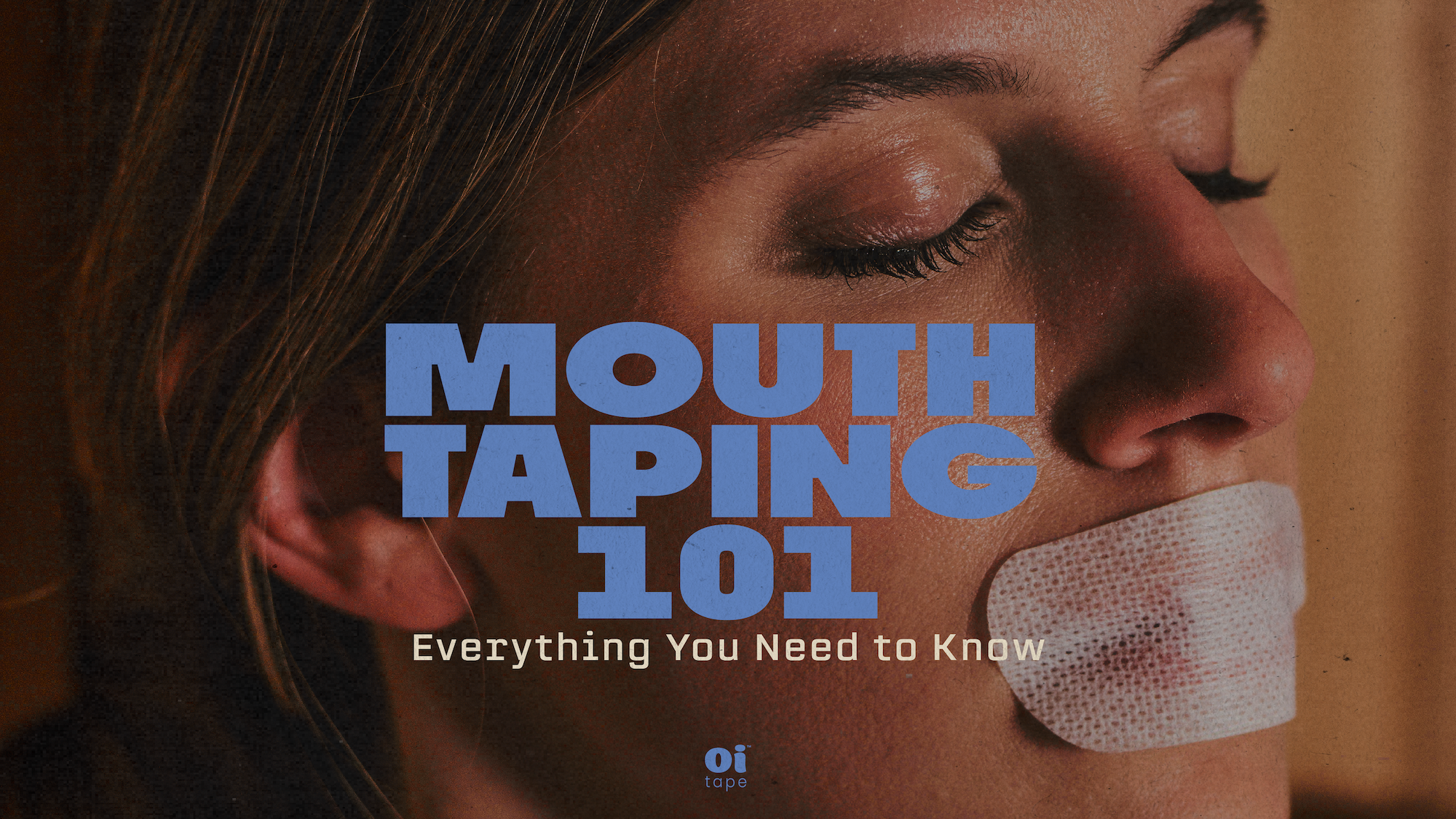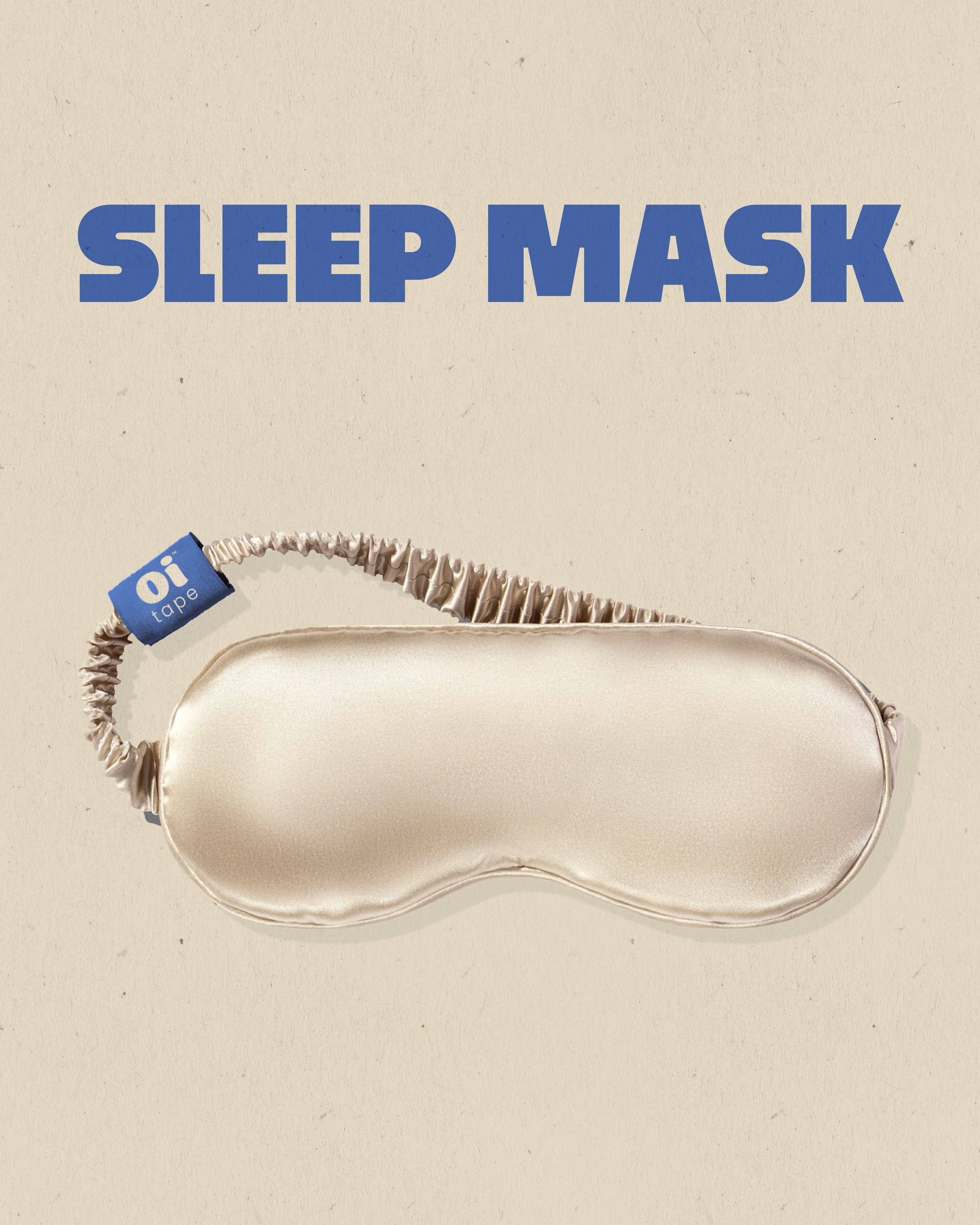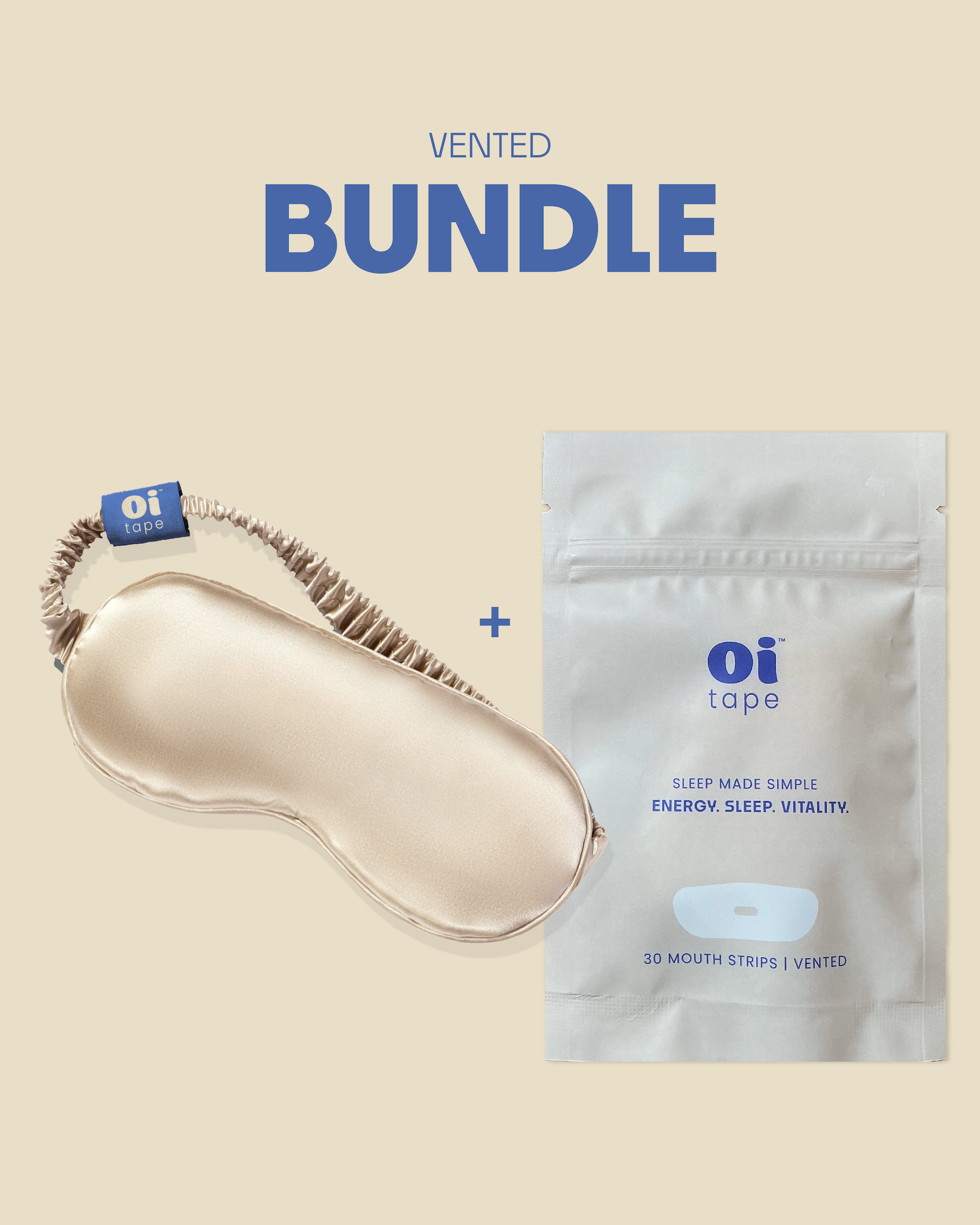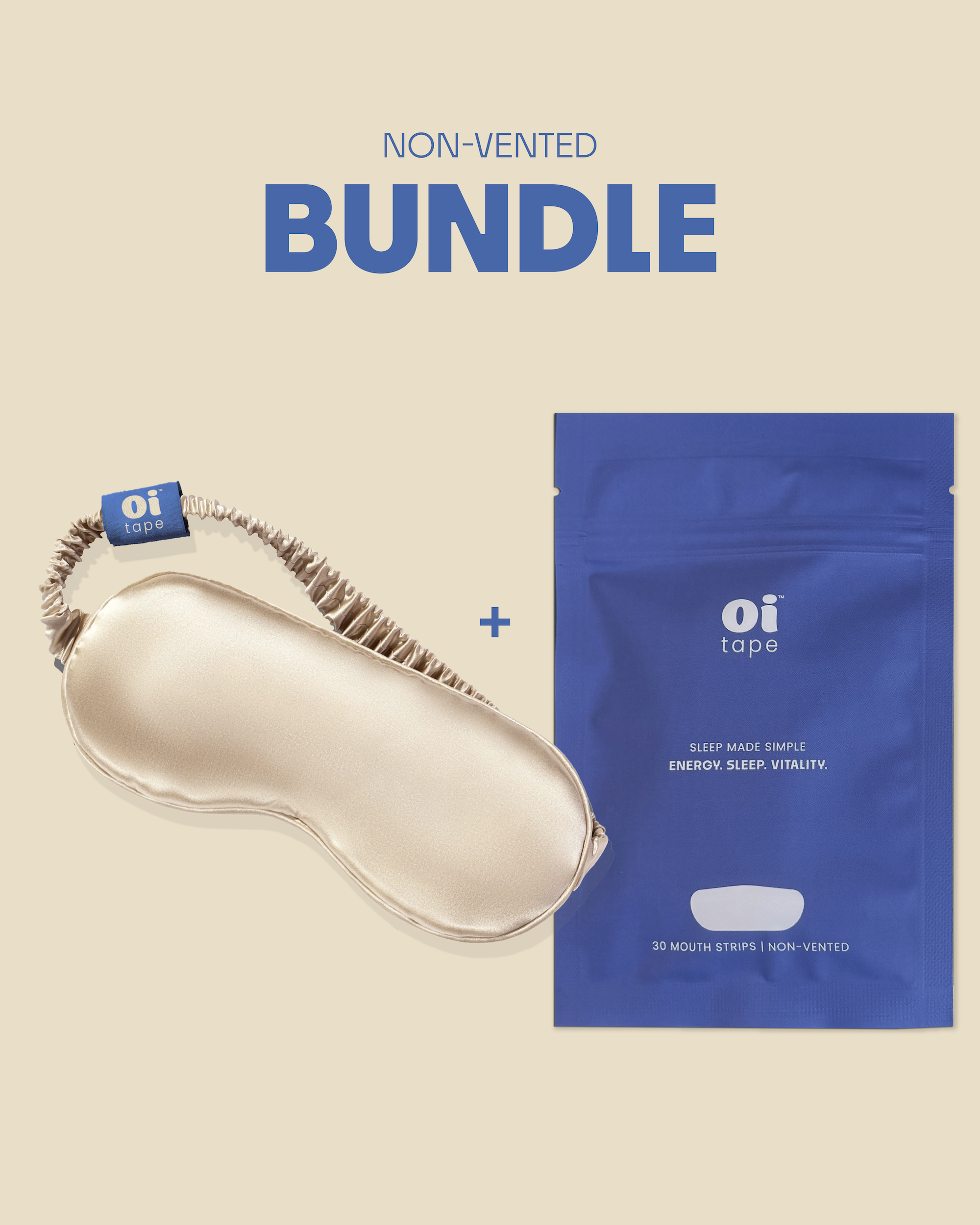

Mouth Taping 101: Everything You Need to Know
Three to Five Years ago, very few individuals knew what mouth taping was and questioned why any person in their right mind would tape their mouth shut. While mouth taping is more widely known and has a rising level of use, many people interested in trying it are unsure of how to get started. What follows is a brief accounting of how to get started and some of the benefits you may discover, as well as possible concerns or risks.
Step 1.
There are many brands and configurations of mouth tape. The first step is to survey the many offerings and investigate which brands are known to have adhesive qualities that are gentle on the skin. Since many of the benefits associated with mouth taping can only be achieved through regular use, gentle adhesion is crucial. That’s not to say, however, that the adhesive quality should be weak. The adhesion must be gentle on your skin and strong enough to keep your mouth largely closed for hours while sleeping. There should be no irritation or discomfort when you remove the tape. The tape’s adhesion should allow it to be reapplied if there is a need to temporarily remove it to speak, take a sip of water, etc. Be sure to look at oi tape, LLC in this comparison process.
Step 2.
There is no getting around the need to try out the tape you select. This is best done over a short period, such as two to three hours. Perhaps, while reading a book on a lazy afternoon, when you are alert and it is still daylight, you’ll want to ensure that there is no skin irritation and no nasal congestion. The tape should be gentle and subtle enough to be comfortable, yet strong enough to significantly reduce mouth breathing and promote nasal breathing. If your breathing is not comfortably diverted to your nasal passages, you may wish to seek medical advice about your breathing pattern.
Step 3.
For mouth tape to adhere adequately to the skin surface around your mouth, the skin in this area must be dry and free of oils. We all have our bedtime washing routines, and they may or may not pave a clear pathway for mouth taping. Even the best mouth tape brands may not perform well if the user maintains a bedtime routine that includes applying moisturizer to the skin immediately surrounding the mouth. For taping to be successful, one’s moisturizing routine must exclude the mouth area, or the moisturizing routine must precede the taping by a sufficient amount of time to allow the moisturizer to fully dry.
Step 4
In the event that mouth taping causes skin irritation, creates anxiety, or results in uncomfortable or labored nasal breathing, the mouth tape should be promptly removed and discontinued. Depending on the nature of the breathing disruption, it is advisable to seek medical advice before restarting. Mouth taping is not suitable for everyone, and individuals with a deviated septum, sleep apnea, nasal blockage, or congestion should consult their physician before proceeding with further taping. Mouth taping is not a medical treatment for sleep disorders like severe or medically diagnosed Obstructive Sleep Apnea (OSA).
Step 5
Building on the last point, any individual who has a deviated septum, suffers from obstructive sleep apnea, or experiences nasal blockage or chronic congestion should consult with his or her physician before using mouth tape. https://health.clevelandclinic.org/mouth-taping
The Benefits of Mouth Taping
The primary benefit of mouth taping is that it encourages nasal breathing. As is often said, our mouths are for eating and our noses are for breathing. Of course, this is an exaggeration, but since 2020 when James Nestor published his renowned book, Breathe, the advantages of nasal breathing have been discussed in the wellness literature, while actual medical tests have been slow to substantiate the many wellness claims. Among these claims is that nasal breathing increases the amount of Nitric Oxide in one’s system. Nitric Oxide is said to relax blood vessels, increase blood flow, and lower blood pressure. Also, nose hairs act as a filtration screen in one’s oxygen intake system, and nasal breathing warms the air that enters the lungs. Finally, nasal breathing is said to increase oxygen in the bloodstream by up to 20%, a remarkable achievement, not yet fully verified through medical testing.
The second benefit that’s highly touted is that mouth taping reduces snoring. Snoring is closely associated with breathing through one’s mouth while sleeping. During sleep, muscles in the throat relax, allowing the soft palate, uvula, and tongue to fall back into the airways. Snoring results when these soft tissues in the back of the neck vibrate as air passes through them. When a sleeper breathes through his or her mouth, these body parts are not properly positioned toward the upper front of the mouth. Snoring is disruptive for both the person snoring and their sleeping partner, if any. There can be little doubt that any meaningful reduction in snoring as a result of mouth taping is a positive benefit.
The third benefit of mouthtape is the reduction of “dry mouth”. This, in turn, has two benefits. First, when one’s mouth runs dry while sleeping, this can be disruptive. We all know of friends and family who bring a cold glass of water to their bedside to “wet their whistle” during a night’s rest that is interrupted due to “dry mouth”. Second, “dry mouth” has a documented negative impact on dental hygiene. This results from the fact that air directly entering an open mouth evaporates saliva, which is a natural lubricant that bathes one's teeth and gums to retard cavity formation.
The fourth benefit is perhaps the most difficult to measure. That is, mouth taping is said to increase the quality of one’s sleep. An increase in REM sleep, the most restful and deepest stage of sleep, is reportedly promoted by mouth taping. This increase in REM sleep is said to result in more energy and alertness in one’s waking hours.
The fifth benefit may be measurable, but only results from regular use of mouth tape over an extended period of time. This relates to jaw alignment, which tends to weaken when one breathes through his or her mouth and the jaw structure becomes lax. This can result in narrow palates in children and cosmetic jaw-line issues in young adults.
The Risks of Mouth Taping
As a general proposition, many of the benefits cited above are somewhat anecdotal and, for the most part, have not been accredited through rigorous scientific or medical studies. Conducting such studies takes time, and these claims have not yet undergone the requisite analysis.
The most significant risk arises when individuals not medically suited to using mouth tape elect to try taping without prior medical approval. Such individuals are those with a deviated septum, severe sleep apnea, nasal blockage, or chronic congestion. Additionally, while most mouth tapes are easy to remove, anyone who lacks the ability to remove the tape should not use it, as improper use of non-vented tape could potentially lead to asphyxiation.
Finally, some mouth tapes use adhesive that can lead to irritation or skin abrasions. If this should occur, taping should cease immediately, and one should consult his or her medical advisor. There are many tape qualities and, as stated above, care should be taken to select a tape that is medical-grade and does not contain toxic chemicals or additives.
On Your Way to Mouth Taping
In light of the above, we believe that oi tape should be your first stop if you decide that mouth taping is right for you. Starting from the first step, you will find that no mouth tape on the market exceeds the high-quality standards set by oi tape. It is free of latex, BPAs, parabens, phthalates, dyes, and perfumes. The tape is medical grade and produced in a sterile environment. It uses silicone adhesive, not acrylic adhesive, unlike most other mouth tape brands. Finally, it's also one of the only mouth tapes that offers two configurations: vented and non-vented, which helps address some of the anxiety concerns that can arise from the initial use of mouth taping on the path to a more restful sleep and better health.





